With the evenings drawing in and austerity measures meaning street lamps are going out all over Europe, the time seemed ripe for a practical night on lighting etc at OVFM.
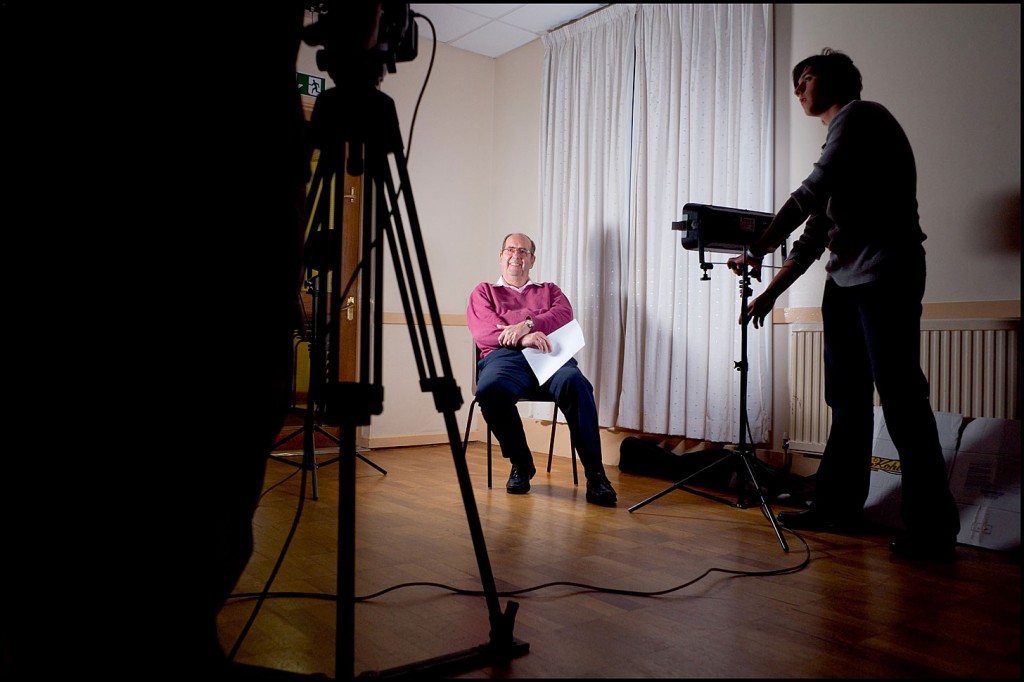
The buzz of expectancy at the club on Tuesday 15th November was enough to make your fillings rattle as The Crew set to work transfering the hall into an outpost of Hollywood (or Pinewood, Bollywood or any other Wood you fancy). So for those of you who missed this great event here is a complete and truthful report of what occured…honest!
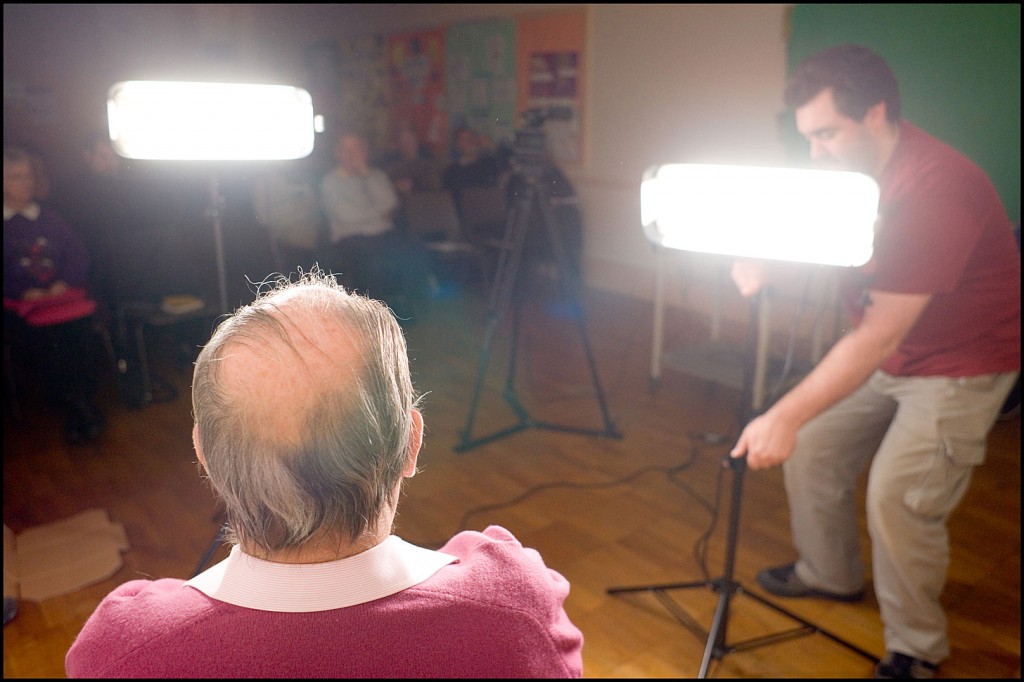
Lights, camera…screen, projector…more lights, tripod, volunteers, more lights and ACTION! But first Ian took centre stage to get the ball rolling on the bijou but perfectly formed Coaching Evening Cinematic Extravaganza. This production will be the culmination of what will quite literally be a film making journey as week by every other week the Coaching Evenings build into a collection you”ll treasure forever…free binder with issue one.
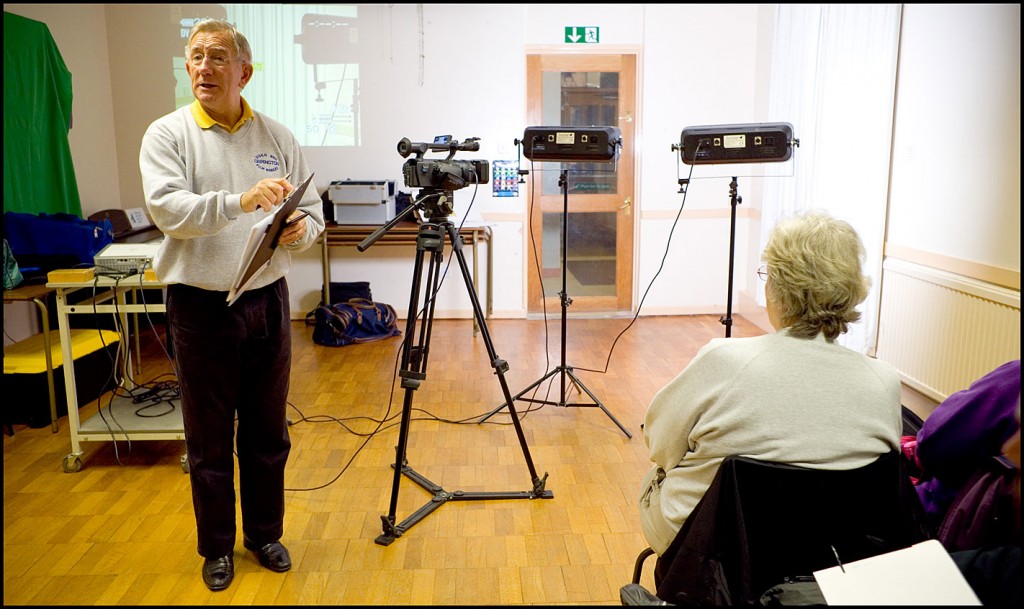
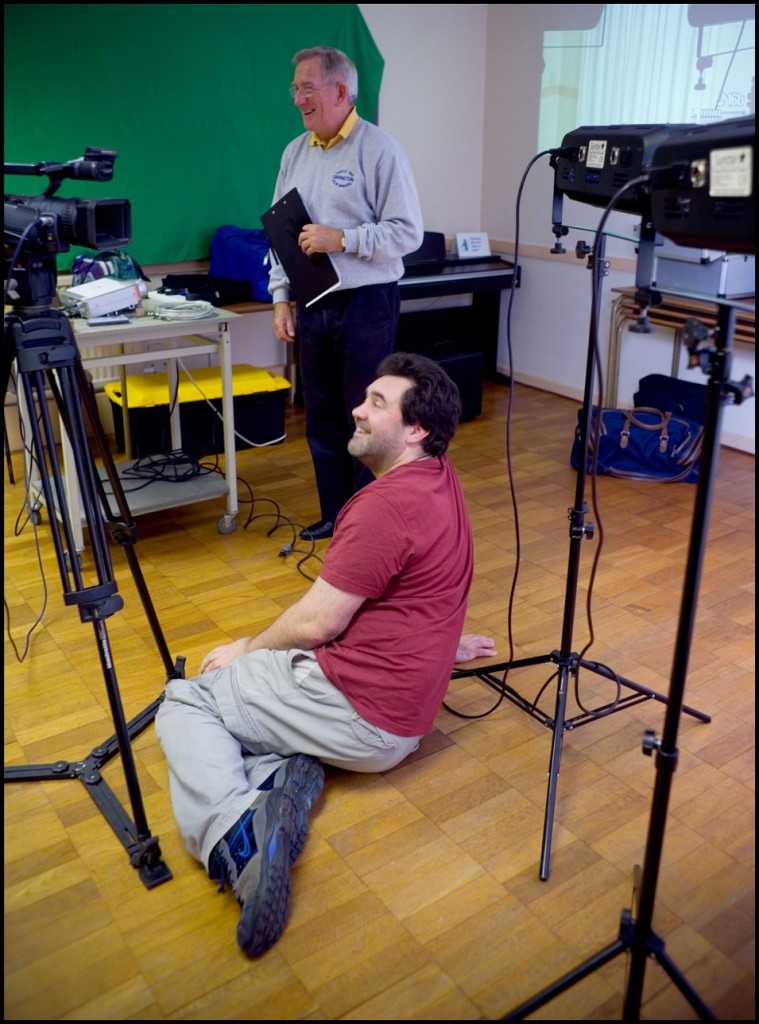
Pep talk given, scripts distributed, volunteers…err volunteered it was time to Bring On The Coach! Drum roll please, draw back those curtains and give a warm OVFM Coaching Evening The Third welcome to…eh Chris!
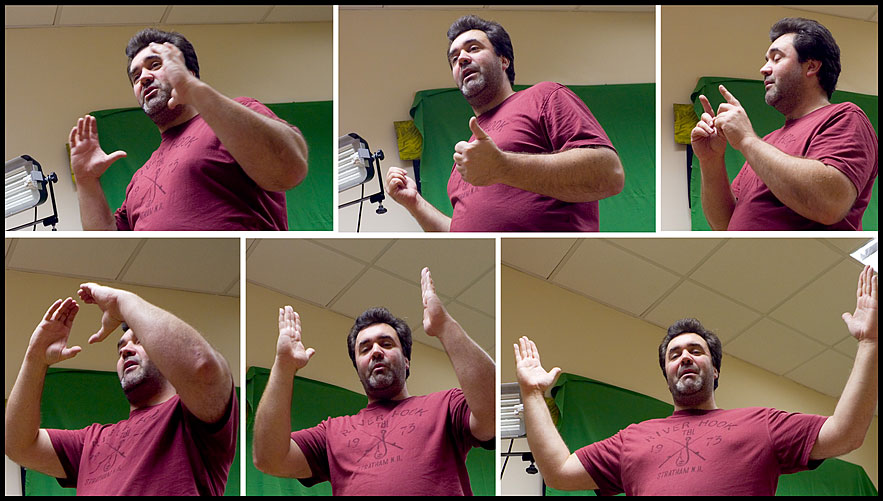
Fresh faced and totally pumped after leading his own all day seminar on “how to do techy stuff” (don”t ask me, I still need two hands to tell the time…curse you wretched LED watch) Chris soon launched into part one of the evening.
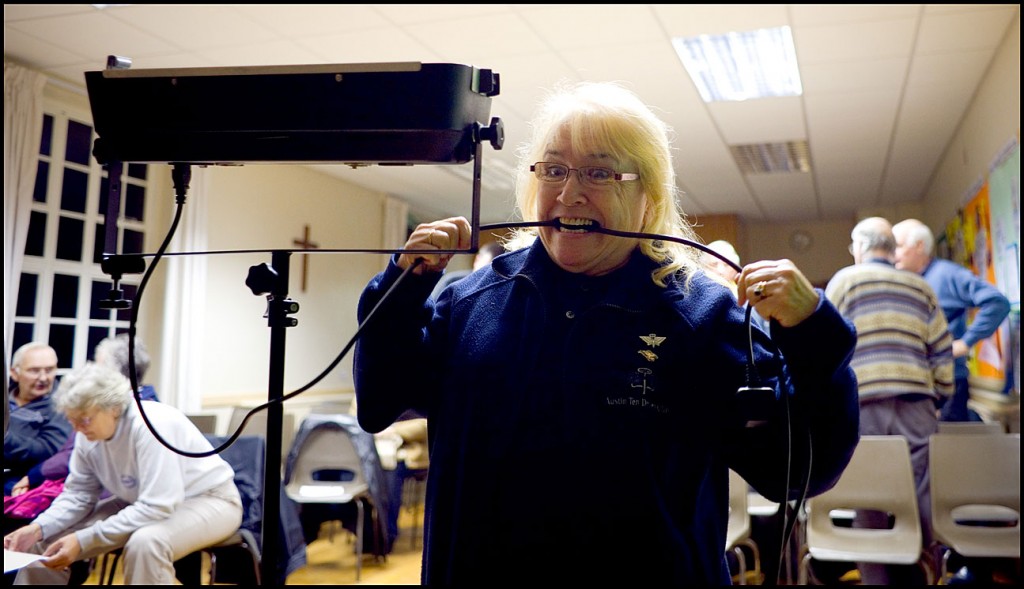
And tonights subject? Lighting, lighting, lighting oh and a bit of tracking.
We have the lights Now all we need is a subject…bring on the first victim.
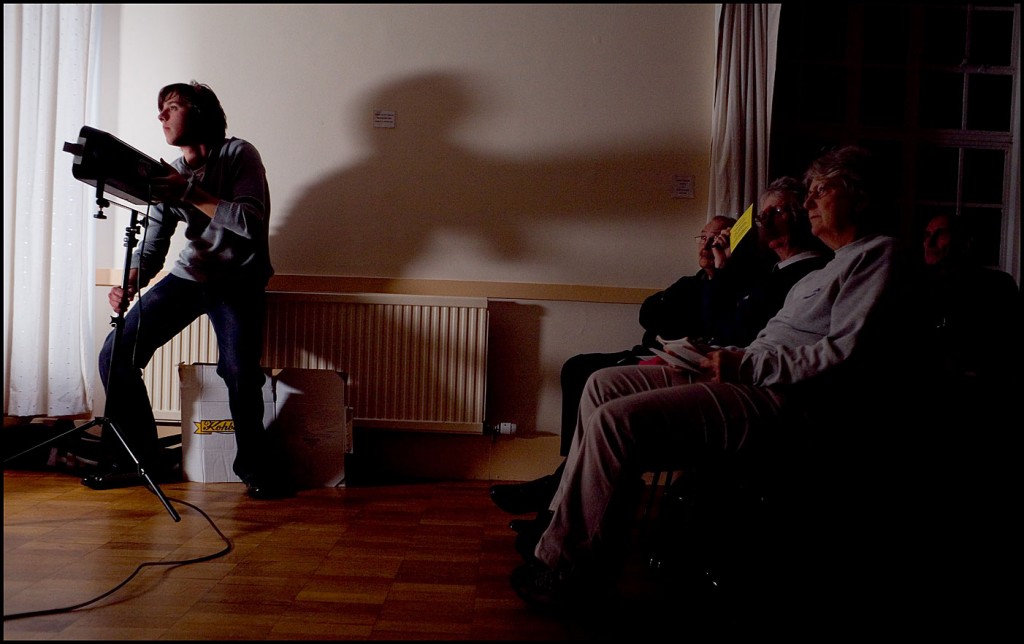
Tony steps up and is soon bathed in light as Chris shows the effect of dramatic side lighting. Tony”s rugged, handsome and very distinguished face, seemed to exude quiet authority as he sat calmly surveying the scene before him with regal gravitas (and let me just take this opportunity to thank Tony for his kind and totally unexpected contribution to my little charity). As Chris worked the camera Tony”s face appeared in glorious super close-up on the wall. Thus the effect of the lights could be easily viewed by all and the large and attentive audience of “wannabespielbergs” as they like to be know, to study the fall of light and shade in detail.
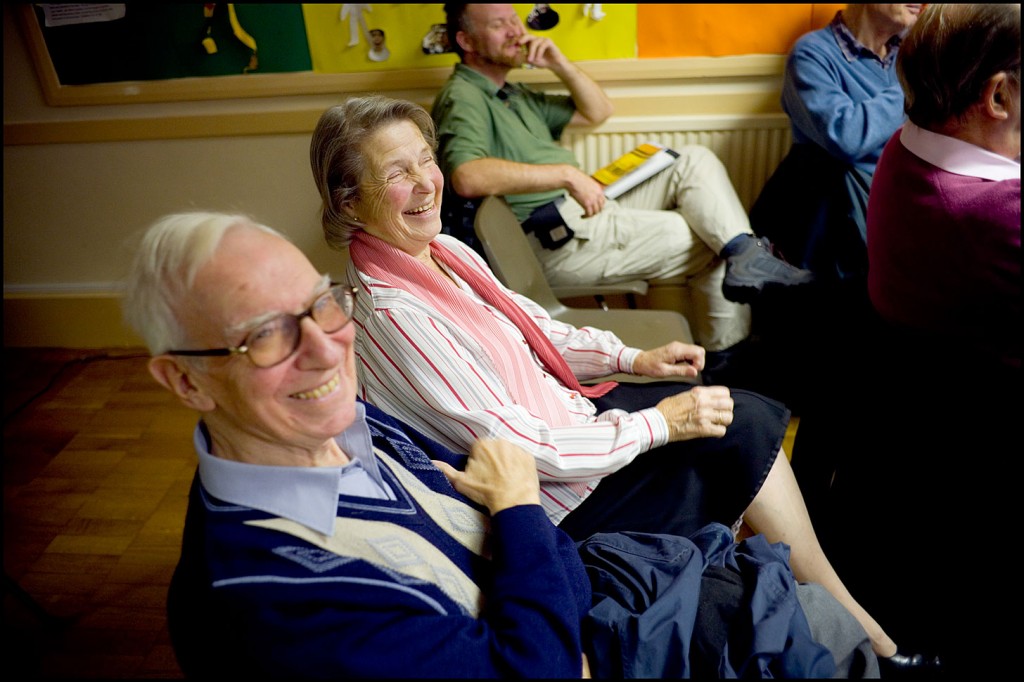
Marko then skilfully manned the reflector to demonstrate how it can be used to reduce contrast in strong lighting conditions and kick light back where it”s needed. As Chris pointed out, unlike our eyes, the camera is unable to cope with the extremes of contrast that occur in many situations. The lit areas of the subject can too bright and overexposed while the unlit shadow areas can be dark voids without any features. So lighting should be managed to control this by the intelligent use of reflectors or “fill” lighting.
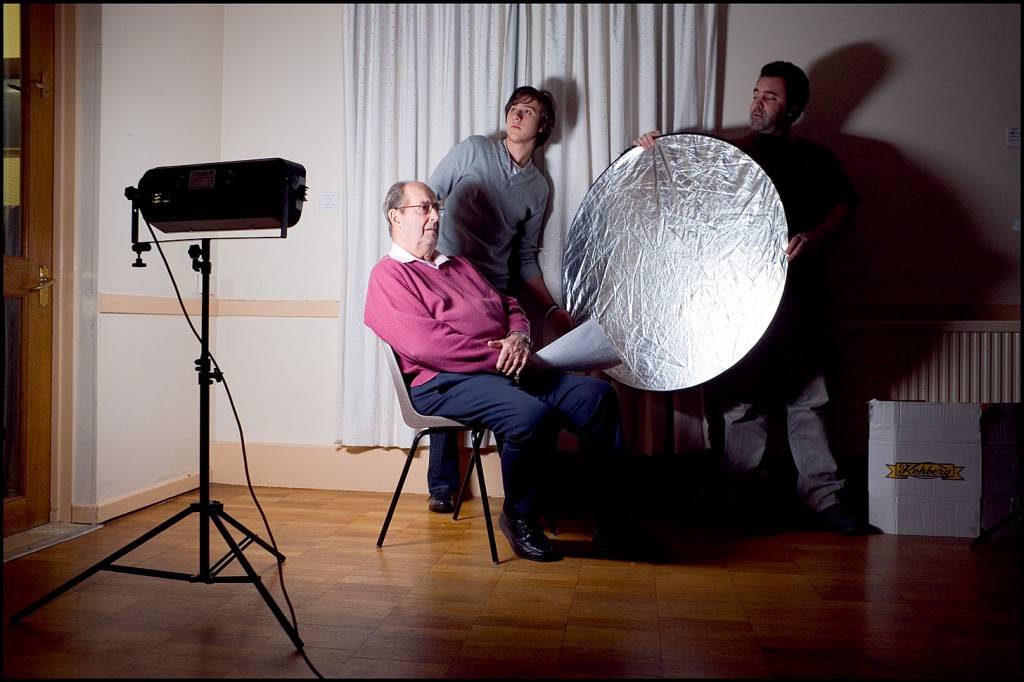
Reflectors. Why are they available in different colours?
Now at this point you are probably expecting some explanatory photos for illustration purposes.
Well! It”s like this. Needing a subject for the photos I contacted our regular Go-to Glam Girl Model to propose a short photographic sitting.
“How much?” Freddy demanded down the phone.
Naturally I was taken aback. After all Freddy is well known for her generous nature, as well as her beauty, and anyway the OVFM photographic slush fund had recently been withdrawn (don”t ask, but my all expenses paid long weekend in Paris slot machines to seek “inspiration” may have been a contributory factor) and I was now totally skint.
“How about a chip butty and a nice big mug of tea Freddy.” I suggest, thinking this a very tempting offer, especially as we all know tea is the drink of champions.
“Wise guy! I don”t get of of bed for less than £10,000!” She shouted, before throwing the phone down with such force I was deeply concerned for the safety of any innocent bystander who may have been passing.
And so in the abscence of our very own diva of the catwalk I shall just have to describe the lighting effects, thanks Freddy!
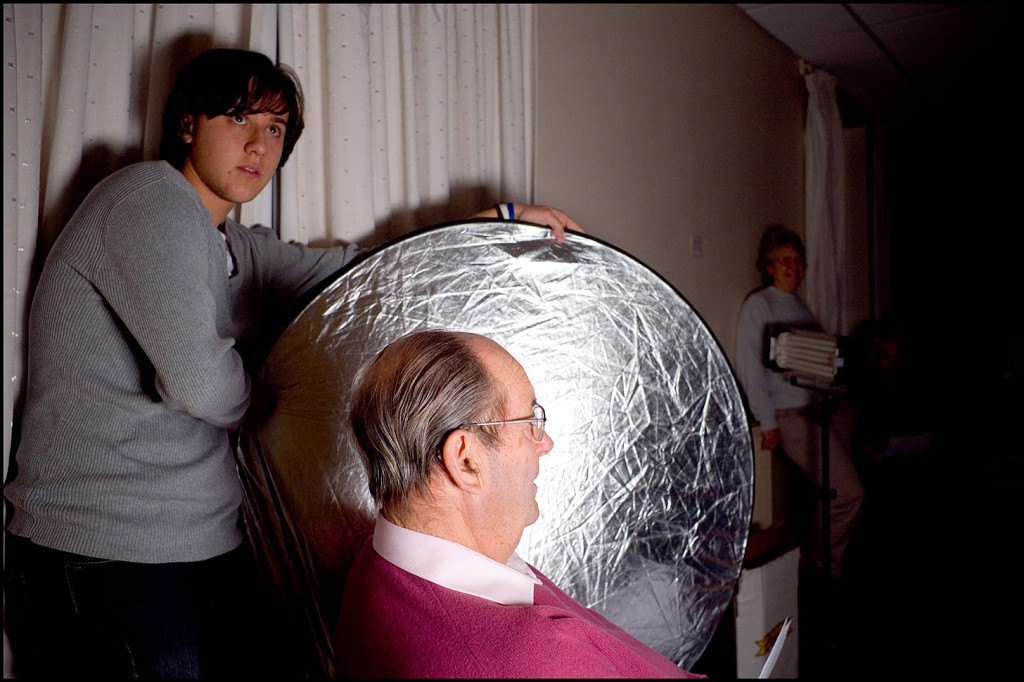
Silver, neutral in colour but with maximum reflectivity.
White, also neutral in colour but less reflective, when you want less fill or your don”t want to dazzle your subject.
Gold (or similar) this is not neutral coloured but adds a “warm” tint to the subject that is not unlike a suntan and consequently gives a healthy glow to the subject. Use sparingly as the colour cast can appear unnatural if used in the wrong situation.
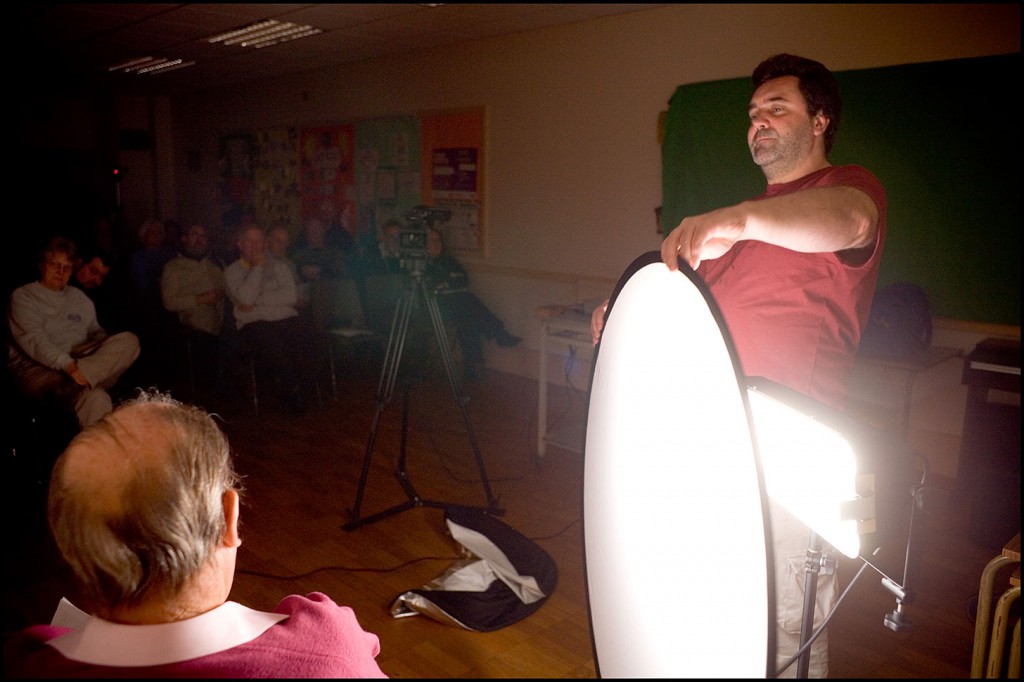
Black, being a simple soul it took me years to get my head round the concept of a black reflector but now I “get it” as it is a very useful tool to control light. Basically you use it to subtract light and selectively shade the subject. For example if the subject is close to a colourful surface that is casting light onto it and you”re unable to reposition the subject then place the black reflector between the two. Or if you”re in a small, light walled room but you want dramatic deep shadows on your subject use the black reflector to block the natural fill. Or finally my favourite use for it is in available light portaits outside where “toppy” lighting can occur that throws the eye sockets into shadow. Use the black reflector (or similar) above and infront of the subject to block that top lighting so that the face is illuminated from the front (a similar effect can be achieved by taking the subject under the shade of a tree, for example).
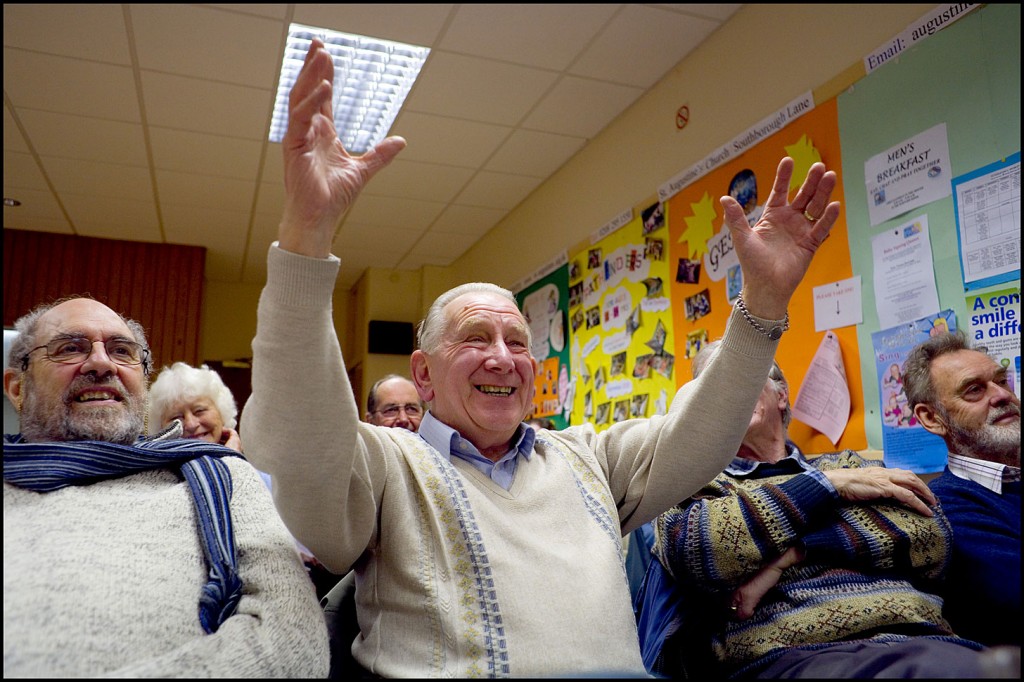
Tony was very much at ease in the spotlight so it was time for Chris to welcome contributions from the audience. Basil made the excellent point that there were budget alternatives to the flexible, steel hoop style reflector that Chris was using. Options like silver foil on card (but do crumple the foil first), space blanket (excellent for portability, cheap but does require a friend or two to hold it), a white bed sheet (obviously coloured reflectors are not suitable as they add a colour cast to the subject). In truth any pale surface can be used to kick back a little light into the shadow side of the subject, a white wall or even a sheet of newspaper if you can get it close enough.
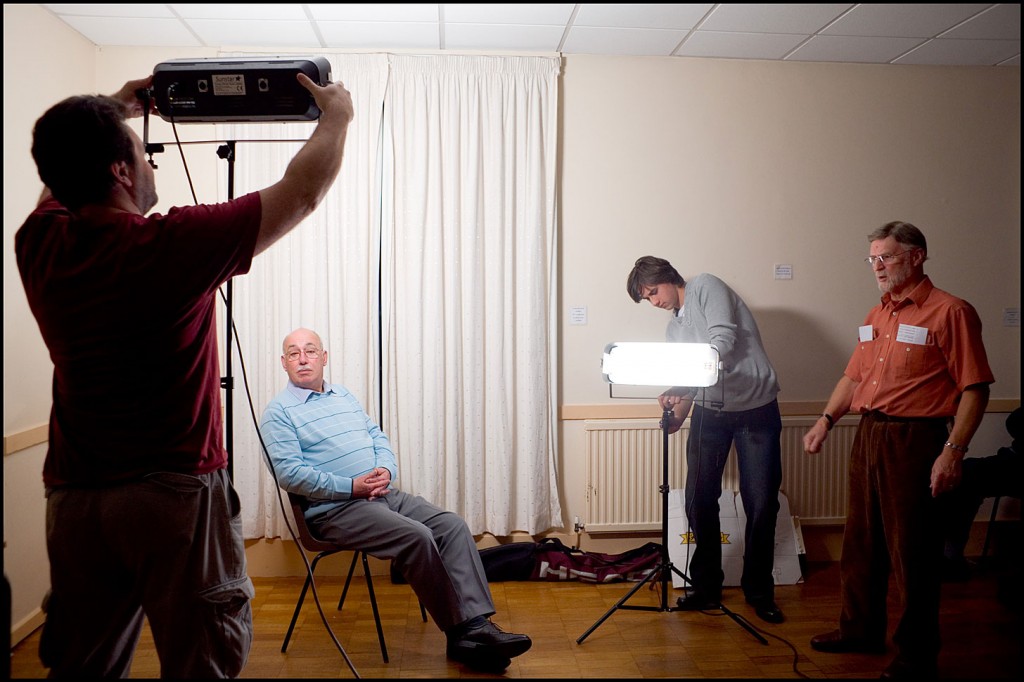
Rising to the challenge of creating Mastermind style lighting Malcolm and others leapt to the fore to tinker with angles, brightness, distance and even subject…sorry Tony but you”re FIRED!
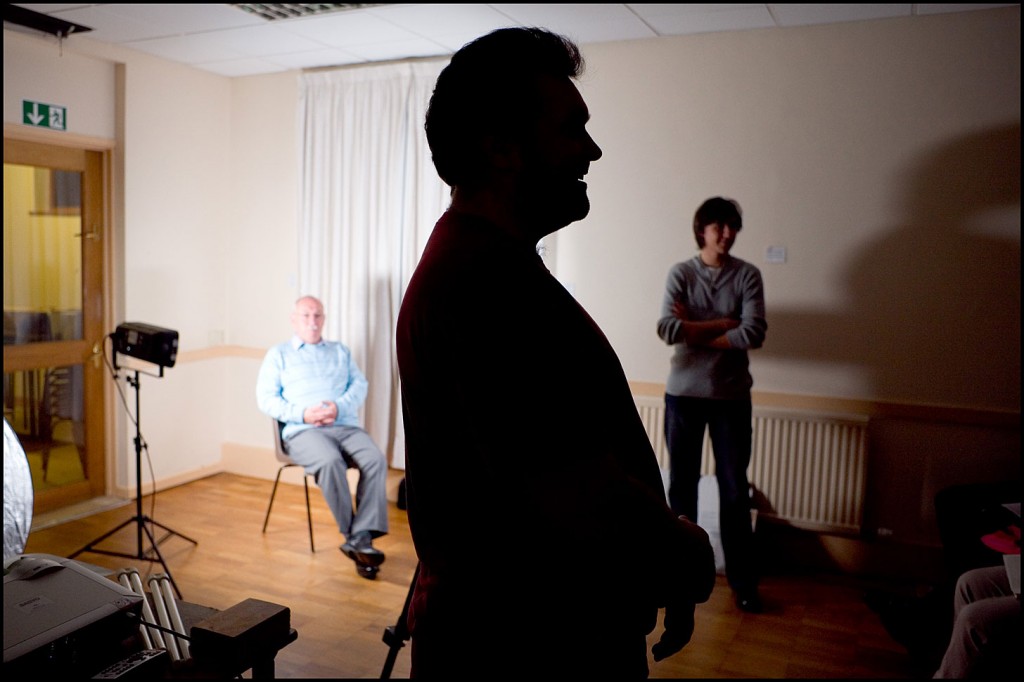
Chris was also keen to show off his latest hi-tech acquisition, not his iphone (for once!) but a one metre wide by two metre long, half centimetre thick, deformable and light weight, tri-form waffled construction, fully recyclable device for light occlusion. Okay, okay! Yes it was just a piece of tatty old cardboard.
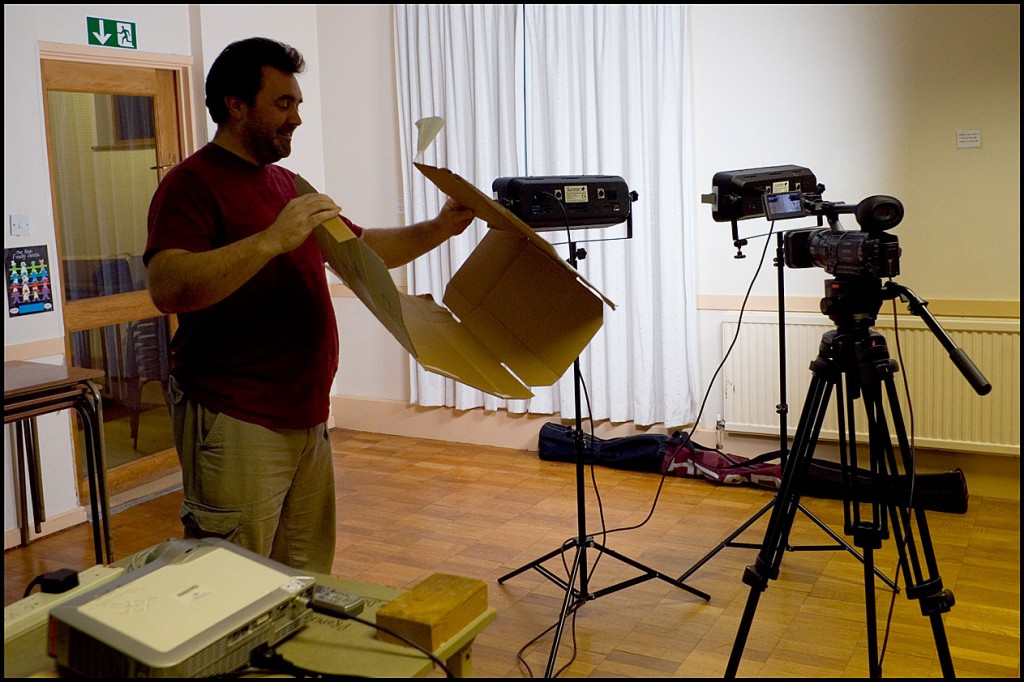
Chris Demonstrates 21st Century Technology[/caption]
Apparently this was all that Chris could afford since the budget available for club equipment had somehow been mysteriously depleted recently…but on the positive side some really excellent French cheeses are being served at the commitee meetings nowadays thanks to a generous but unnamed benefactor.
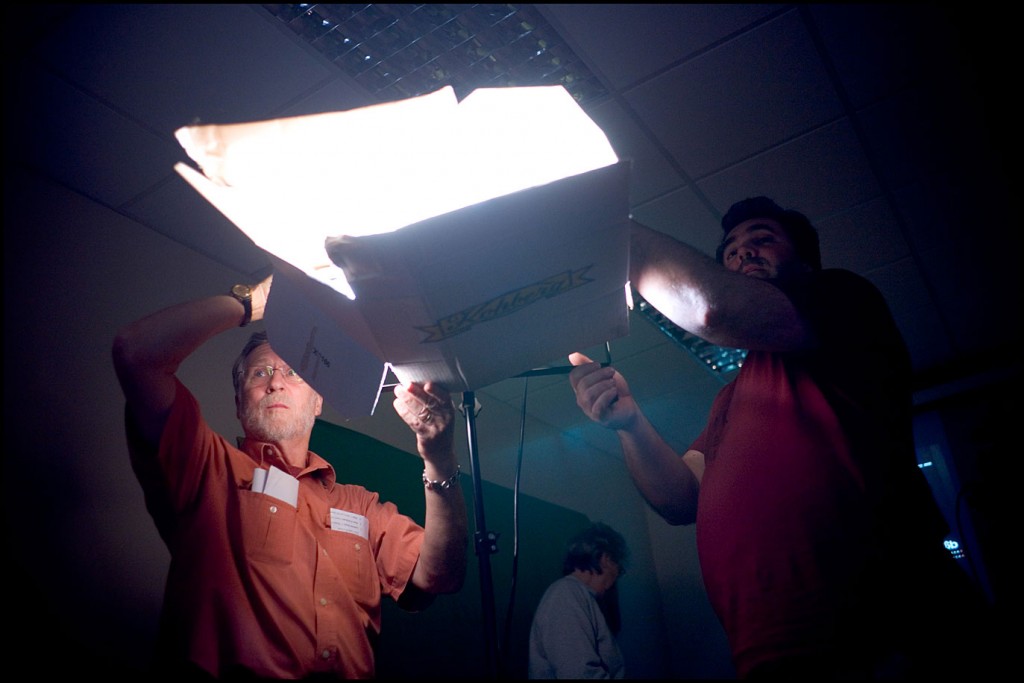
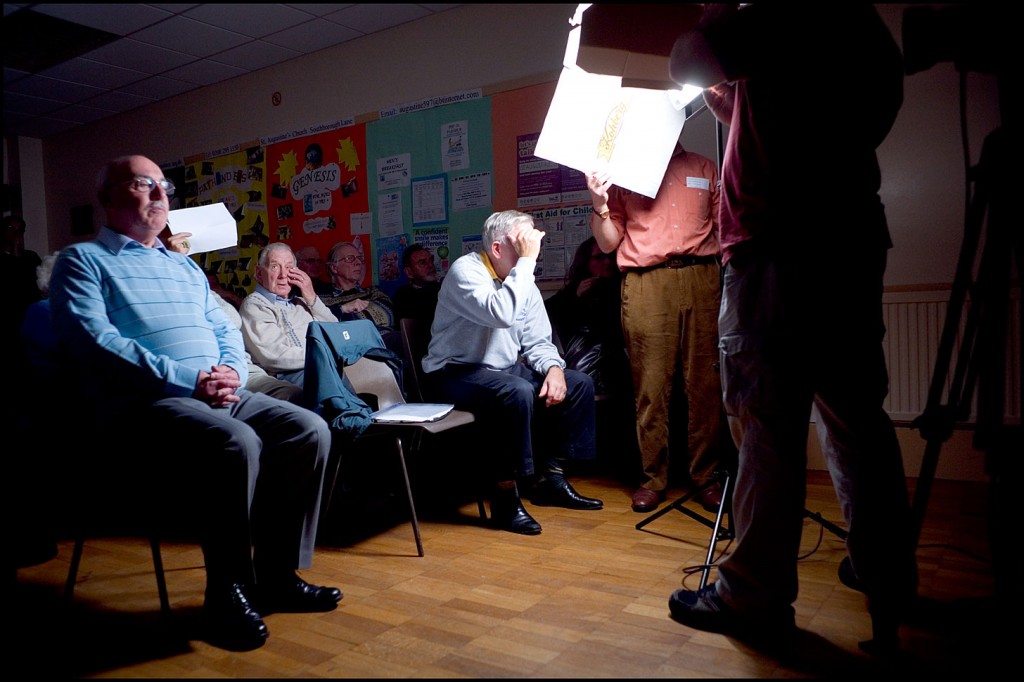
Anyway the point is that in the hands of an expect (where were you Reg when we needed you?) the cardboard can be used like barn doors, or a snoot, or a baffle, or a gobo, or in other words it can stop light going where it”s not welcome. We also learnt of giant inflatable screens used by film makers to shade large areas, which can be suspended from cranes for maximum effect.
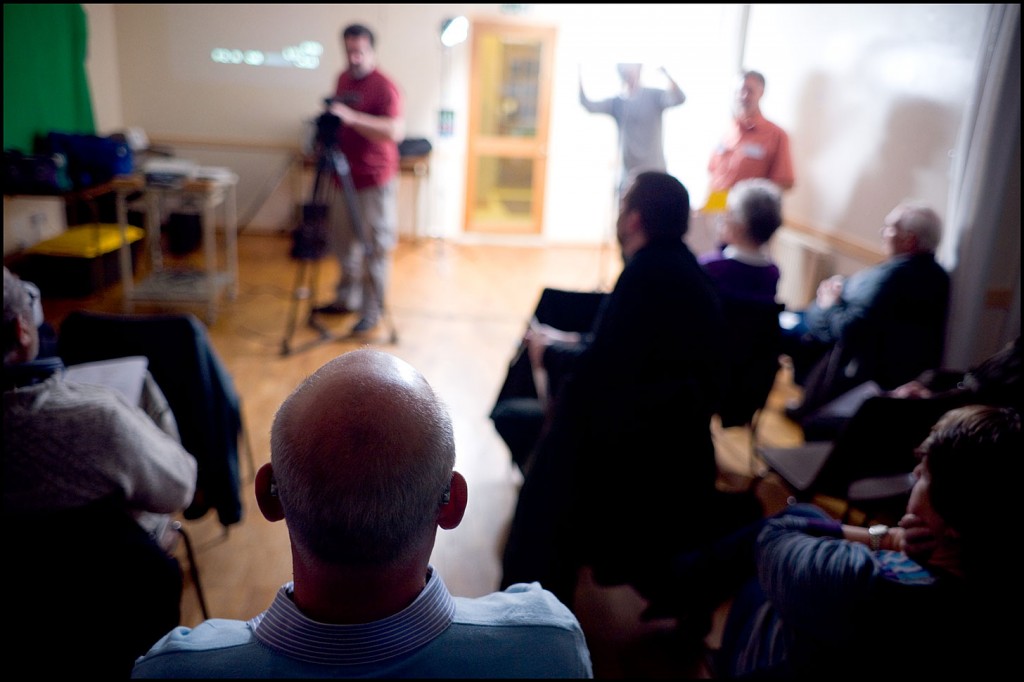
Back light, background light, natural light, window light, room light, even light…the whole lighting thing is a real biggy. Chris could only touch on some elements of it in the limited time available but the subject will doubtless be returned to at future OVFM meetings or if you have any questions the club is replete with expertise so just ask around.
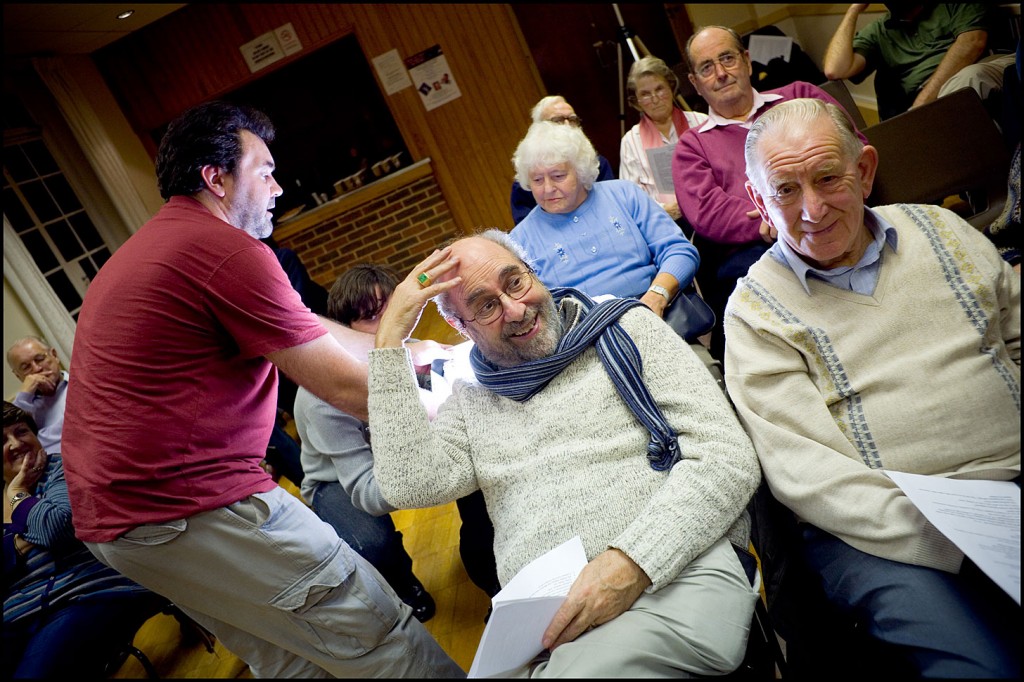
After teabreak it was time for part two of the evening which majored on the woefully under ultilised but highy effective club dolly tracking system. This simple, lightweight and easy to use gadget can add a real polish to your production by allowing the camera to move along smoothly and in a controlled way.
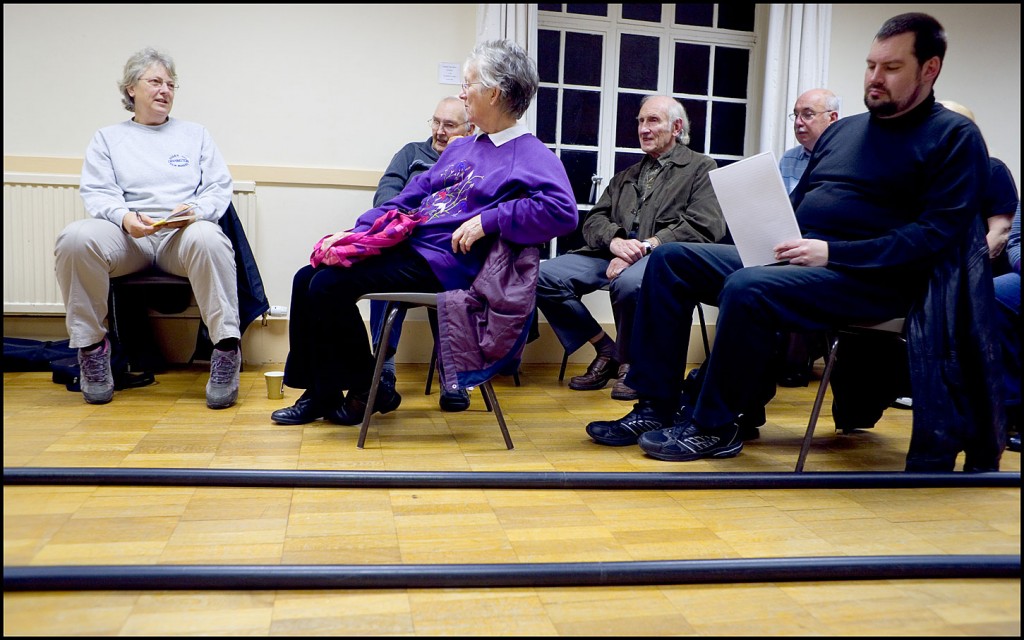
Chris demonstrated a number of uses for the tracking technique and several eager students took the opportunity to have a go themselves.
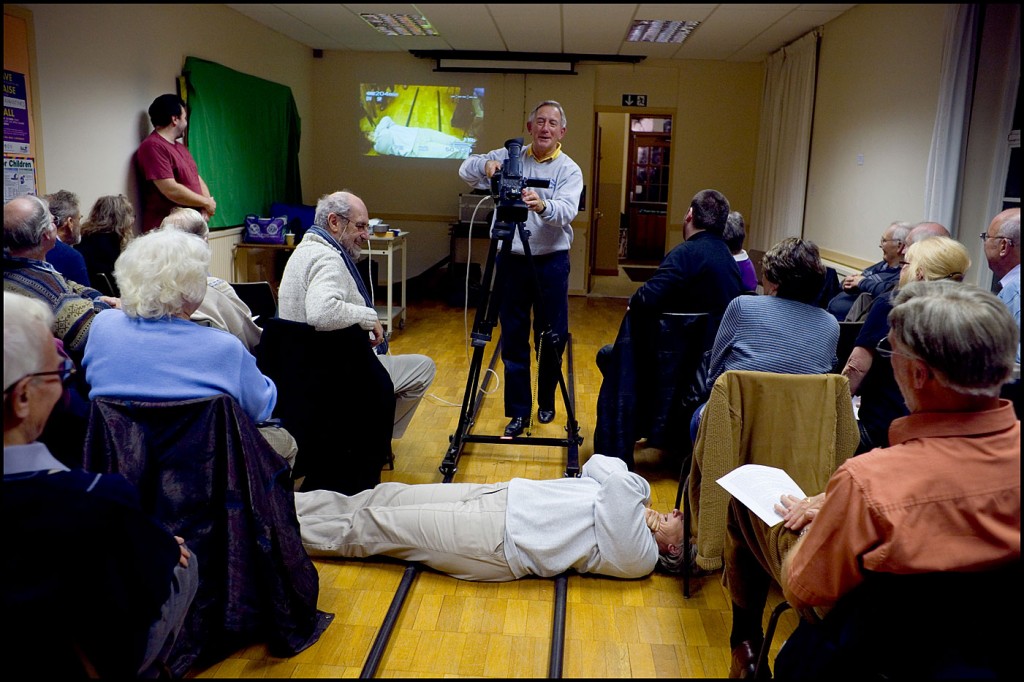
My absolute fav use of the dolly and tracks is the “Jaws” effect as I think of it. It is more properly known as the dolly zoom, or also as the Hitchcock Zoom, the Vertigo Zoom, the Trombone Shot etc.
There”s a scene in Jaws where the Police Chief (actor Roy Scheider) is sitting on the beach watching the tourists splash in the surf whilst convinced a rogue shark is about to strike but unable to close the beach. His keen eyes spot something in the water and as the emotions are written across his shocked face the camera rapidly tracks towards him while the lens zooms out (from telephoto to wideangle) to maintain his face at the same size. The resultant change in perspective is dramatic, unsettling and very spectacular.
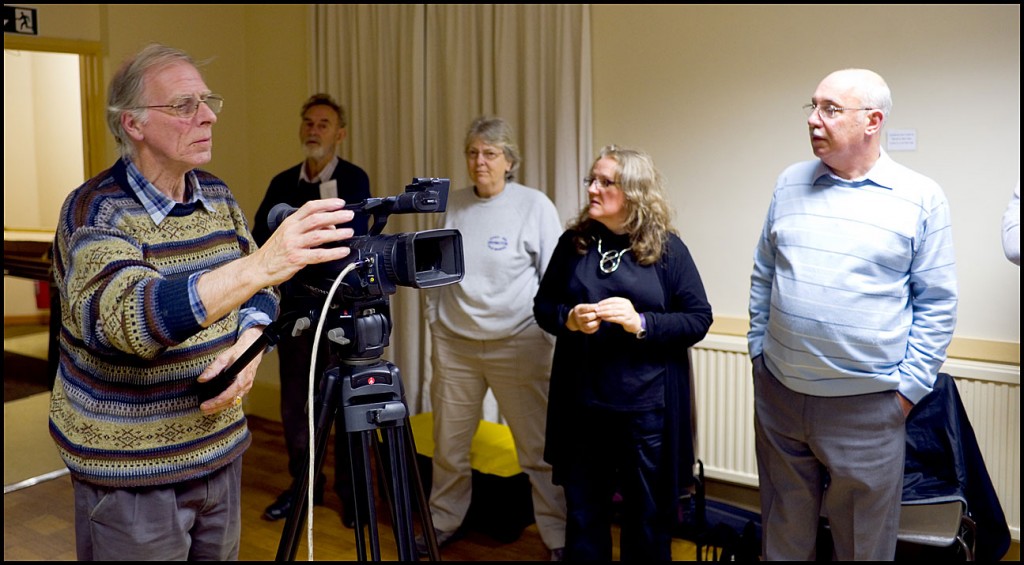
With Bob and Lee in full acting mode, Anna, Jane, Freddy, Chris and others demonstrated this technique with great success. Andy has been producing DVD”s of all the Coaching Evenings and they are available to buy, this demo alone has got to make the purchase worthwhile…it looked fab, especially with Bob performing at Oscar winning level.
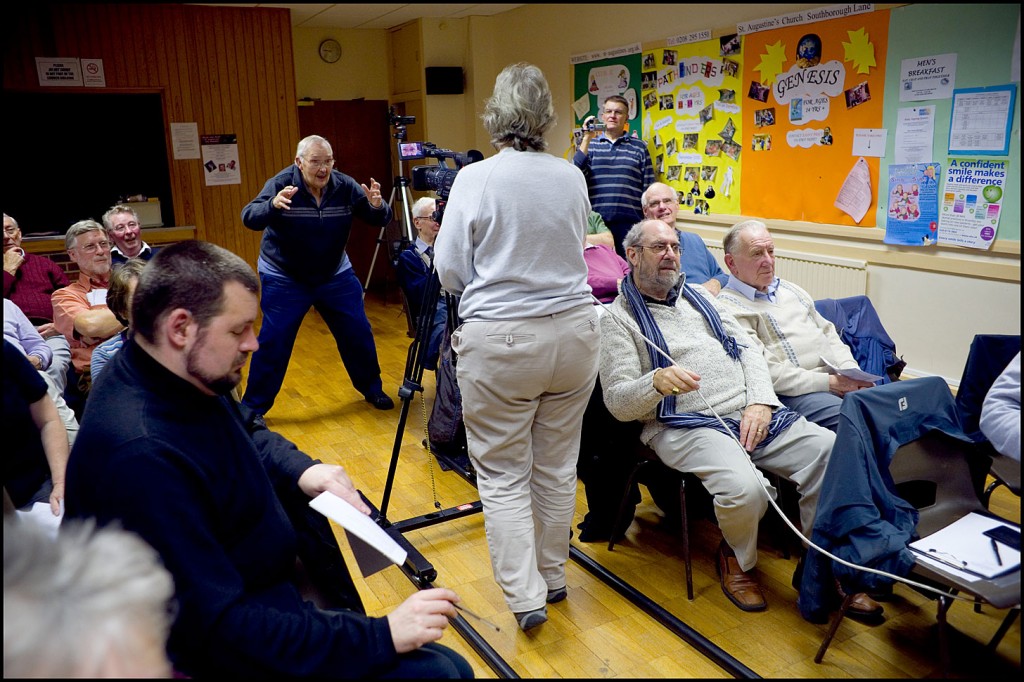
So sadly, with time having beaten us, the momentous Third Coaching Evening came to an end.
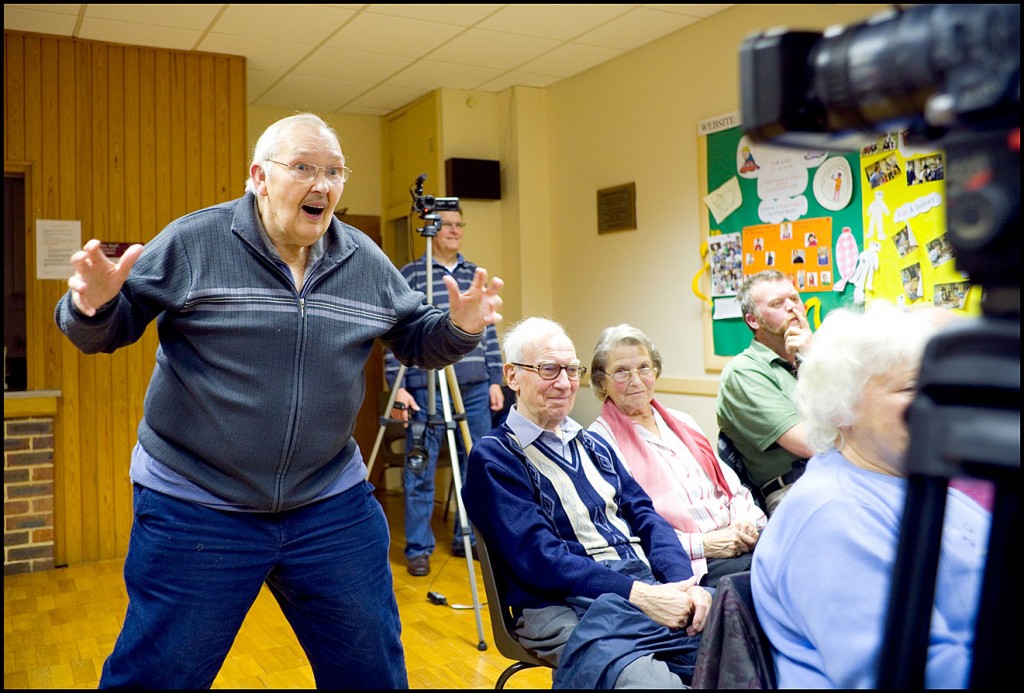
We were tired, entertained, uplifted but most of all thanks to Chris and his band of helpers we were all a bit wiser too.
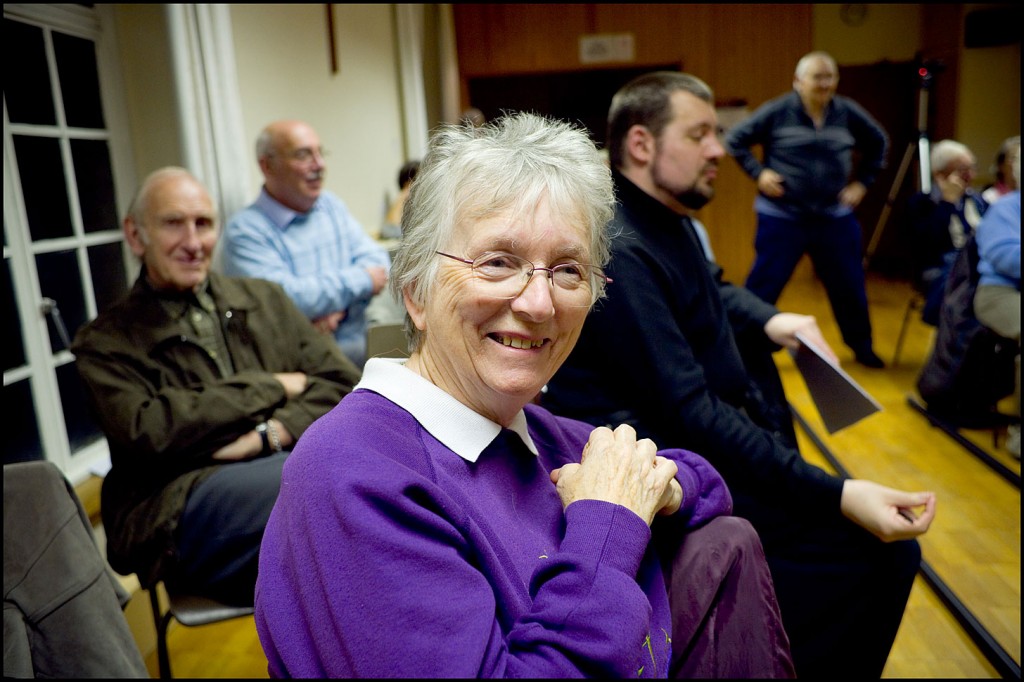
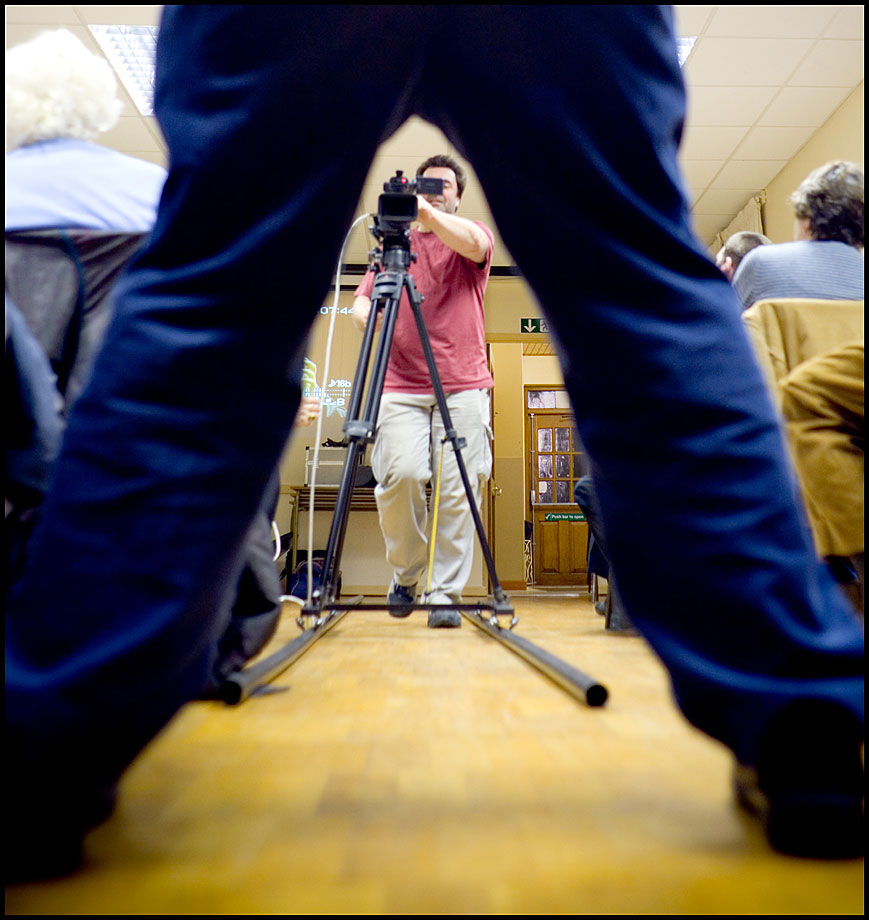
The lights and the track system belong to the club and can be booked out for use by club members along with a variety of other equipment (look in the Members” Section of the website for details). DVD”s of this and the other Coaching evenings are available for a small fee from Andy. Psst…and if it”s delicious French cheese you”re after just tip me the wink and I”ll see what I can do.
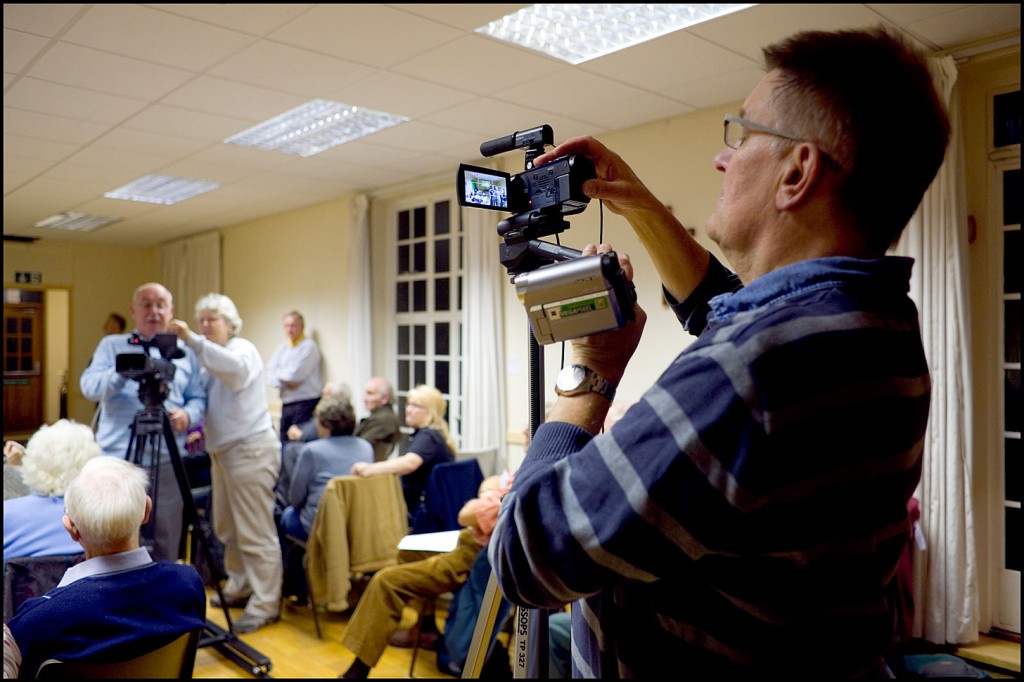
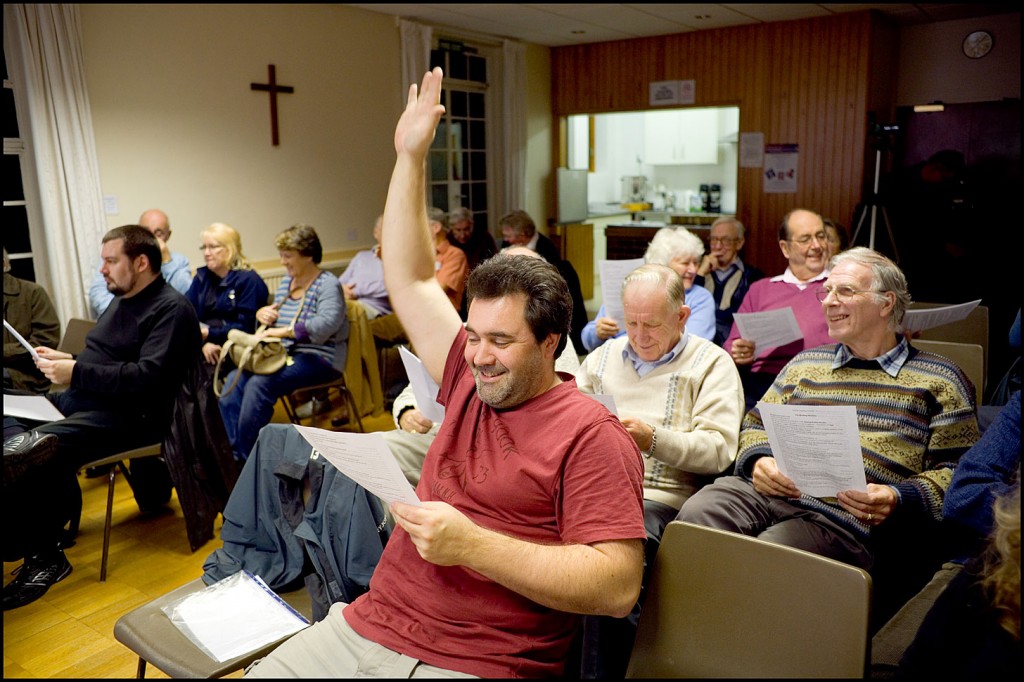
Great pix and ‘explanations’ again, Simon. Especially like the “Serious Caseleys” but have to tell you that I actually cost a lot more than £10,000!!
Ahh Freddy you will always me my Milllion Dollar Babe!
I’ve been waiting all week for this! 😉
Great work as usual Simon! I just hope after seeing this that Chris remembers how to do the YMCA dance properly in the future… 😛
Ahh! The Village People! Now there’s a thought.
I may out of line here Lee but surely disco dancing and film making are but two sides of the same coin!